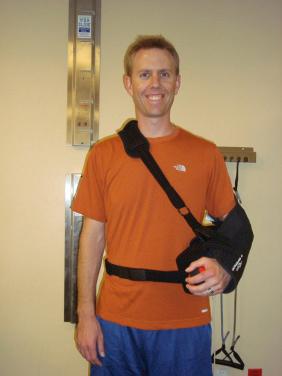Physical Address
304 North Cardinal St.
Dorchester Center, MA 02124
Postoperative rehabilitation following rotator cuff repair has been shown to improve functional outcomes in varied patient populations. Owing to the fragile nature of the repair during the initial months after surgery, it is imperative that the rehabilitation professional follow an evidence-based postoperative progression in sync with the physiologic and biomechanical factors of healing to ensure optimal postoperative results and maximize return of functional mobility while protecting the surgical repair. Recently, there has been growing support for delaying both passive and active range of motion (PROM and AROM, respectively) during the postoperative period compared with more traditional protocols that begin PROM shortly after surgery. This chapter highlights the appropriate guidelines for postoperative care following rotator cuff repair under both circumstances.
We highlight the rationale for both early range of motion (ROM) and delayed ROM protocols, citing the most recent evidence in support of each scenario.
We outline the importance of the three stages of physiologic healing and their relationship with postoperative rehabilitation progression.
We discuss postoperative precautions as well as highlights of the various stages of rehabilitation.
We outline the rehabilitation progression/protocol for early-onset ROM, delayed-onset PROM, and delayed-onset AROM.
Observation of posture/static alignment, sling positioning ( Fig. 31.1 ), surgical incision healing, and any postoperative swelling or bruising

PROM measurements on affected arm, PROM and AROM of nonsurgical arm, and cervical and thoracic mobility assessment
Gross functional strength assessment of periscapular muscles, forearm, wrist, and hand for bilateral upper extremities (UE)
Palpation for pain, tenderness, and tissue adhesions throughout affected arm and scapula
Neurologic screening for numbness, tingling, motor control deficiencies, or other postoperative sequelae
Functional mobility status assessment to include ability to perform activities of daily living and sport/hobby activities, as well as any other functional limitations
Become a Clinical Tree membership for Full access and enjoy Unlimited articles
If you are a member. Log in here